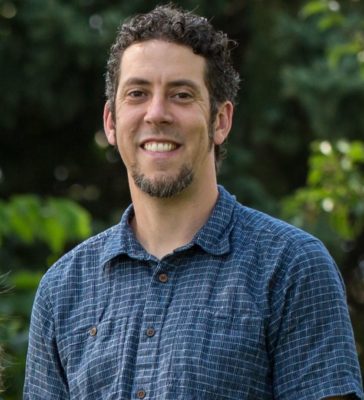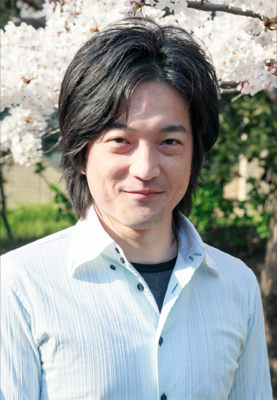Defining group 2 innate lymphoid cell tissue niches, Ari B Molofsky, Dept. of Laboratory Medicine, UCSF, San Francisco, United States.
Group 2 innate lymphoid cells (ILC2) are tissue resident cells that are key instigators of type 2 allergic immune responses. ILC2 can promote beneficial type 2 immunity in the context of helminth infection, but are also key contributors to the allergic pathology associated with asthma and atopic dermatitis. ILC2 are developmentally deposited in tissues where they locally proliferate, and recent work suggests their contribution to physiologic tissue responses during tissue development and tissue remodeling. Our group's prior work indicates adipose tissue ILC2s are key coordinators of a mixed regulatory/type 2 immune response which promotes adipose tissue function and is protective in models of obesity and type 2 diabetes. However, the cells and signals that regulate ILC2 in tissues are only beginning to be explored. In adipose tissue and elsewhere, the IL-1 family cytokine IL-33 is a dominant positive regulator of ILC2 function. As such, we have pursued the regulation and cellular sources of IL-33 that are proximal to tissue-resident ILC2. Using high-resolution imaging and genetic approaches, our studies suggest ILC2 are maintained in specific micro-anatomic tissue niches that are defined by subsets of non-hematopoietic IL-33 expressing cells. By defining these ILC2 niches, we hope to better understand the cells and signals that regulate ILC2 so that we may ultimately exert control over both beneficial and pathologic type 2 immune responses.
Bio: Dr. Molofsky’s research lab, set up in 2015, is focused on the impact of tissue-resident lymphocytes in normal tissue development, remodeling, and the initiation of pathology. The Molofsky lab studies how resident lymphocytes such as group 2 innate lymphoid cells (ILC2) and regulatory T cells (Treg) are supported at tissue niches, using a combination of advanced microscopy, genetic tools, and transcriptomics. The lab has been studying the cellular sources and regulation of the cytokine IL-33, which potently activates ILC2 and Treg, in systemic metabolic function, allergic lung disease, and neurodevelopment. They are also exploring how resident lymphocytes interact and compete at tissue niches to determine immunologic outcomes. In addition to the Milstein Young Investigator award, Dr. Molofsky is the recipient of the Larry L. Hillblom Young Investigator Award, a career development award from the NIDDK, and a UCSF New Frontiers Research Award.
Nitro-fatty acids are formed in response to infection with virus and covalently modify the adaptor molecule STING to reduce production of type I IFN. A L Hansen1, S D Anderson1, M B Iversen1, A Thielke2, G Buchan2, F J Schopfe2, David Olagnier1, Christian Kanstrup Holm1, 1Aarhus University Department of Biomedicine, Aarhus C, Denmark, 2University of Pittsburgh, Pittsburgh, United States
The adaptor molecule STING (stimulator of interferon genes) is central to production of type I IFN in response to infection with viruses – in particular DNA viruses. During infection, viral DNA bind the cytosolic DNA sensor and enzyme cGAS, which in response hereto produces the cyclic di-nucleotide cGAMP. Binding of cGAMP to STING leads to STING dimerization and recruitment of the kinase TBK1 and subsequent activation of the transcription factor IRF3 by phosphorylation. infections.Nitro-fatty acids (NFA) are formed naturally by a non-enzymatic addition of NO or NO2 to unsaturated fatty acids and have previously been reported to reduce inflammation in models of heart ischemia.Here, we demonstrate for the first time that NFAs are formed in response to infection with virus. Further, that NFAs can reduce production of type I IFN in response to herpes simplex virus and to stimulation with the STING agonist cGAMP and dsDNA by covalently modifying STING by nitro-alkylation. NFA hereby represent a novel mechanism to regulate IFN responses by targeting the central adaptor molecule STING.
Memory-type ST2+CD4+ T cells participate in the steroid-resistant pathology of eosinophilic pneumonia, Kiyoshi Hirahara1, Naoko Mato1, 2, Tomomi Ichikawa1, Jin Kumagai1, Masayuki Nakayama2, Hideaki Yamasawa2, Masashi Bando2, Koichi Hagiwara2, Yukihiko Sugiyama2, 3, Toshinori Nakayama1 1Department of Immunology, Graduate School of Medicine, Chiba University, Chiba, Japan, 2Division of Pulmonary Medicine, Department of Internal Medicine, Jichi Medical University, Tochigi, Japan, 3Department of Respiratory Medicine, Nerima-Hikarigaoka Hospital, Tokyo, Japan
The lung has an unique epithelial barrier system to protect host from continuous invasion of various harmful particles including viruses and bacteria. Interleukin (IL-)33, an epithelial cytokine, is released from epithelial cells in the lung and drives the type 2 immune response by activating ST2-expressed immune cells in a number of allergic diseases. However, the pathogenic roles of memory-type ST2+CD4+ T cells in such lung inflammation has been unclear. Here we showed that intratracheal administration of IL-33 induced the substantial increase of numbers of tissue-resident memory-type ST2+CD4+ T cells in the lung. Eosinophilic lung inflammation developed sequentially accompanied by enhanced production of IL-5 and IL-13. T cell-deficient Foxn1nu mice and NSG mice exhibited ameliorated eosinophilic inflammation induced by IL-33. Dexamethasone treatment showed small effects on both the cell number and function of memory-type ST2+CD4+ T cells. Taken together, our study provides novel insight into the pathogenesis of eosinophilic lung disease, showing that memory-type ST2+CD4+ T cells are involved in IL-33-induced eosinophilic inflammation and elicited steroid-resistance.
Selective suppression of IRF5 activity by Lyn in the TLR-MyD88 pathway restrains the development of SLE-like disease, Tatsuma Ban1, Go Sato1, Akira Nishiyama1, Satoko Matsunaga1, Ayuko Kimura2, Yayoi Kimura2, Hideyuki Yanai3, Yoshiko Matsumoto4, Hiroe Hihara4, Tadashi Yamamoto5, Hisashi Hirano2, Akihide Ryo1, Kappei Tsukahara4, Kentaro Yoshimatsu4, Tadatsugu Taniguchi3, Tomohiko Tamura1, 2 1Yokohama City University Graduate School of Medicine, Yokohama, Japan, 2Advanced Medical Research Center, Yokohama City University, Yokohama, Japan, 3Institute of Industrial Science, The University of Tokyo, Tokyo, Japan, 4Eisai Co., Ltd., Tsukuba, Japan, 5Okinawa Institute of Science and Technology Graduate School, Okinawa, Japan
The transcription factor interferon regulatory factor-5 (IRF5) plays an important role in Toll-like receptor (TLR)-mediated innate immune responses, whereas it contributes to the pathogenesis of systemic lupus erythematosus (SLE). However, little is known about the mechanism regulating the extent of IRF5 activation, especially the negative regulatory mechanism. Lyn, a Src family kinase, is also implicated in human SLE, and Lyn–/– mice develop an SLE-like disease. Here we show that Lyn selectively inhibits the activity of IRF5 in the TLR-MyD88 pathway, thereby restraining the development of autoimmunity. Interestingly, Lyn inhibited IRF5 in a kinase activity-independent manner; it bound to IRF5 and inhibited ubiquitination and phosphorylation of IRF5. Consistently, these post-translational modifications of IRF5 were significantly enhanced in TLR7/9-stimulated Lyn–/– bone marrow-derived dendritic cells (BMDCs), resulting in the boost of IRF5-dependent type-I IFN induction. Moreover, DCs freshly isolated from Lyn–/– mice exhibited phosphorylation and enhanced nuclear translocation of IRF5. These results suggest that IRF5 is constitutively activated in vivo in DCs, if Lyn is lost. Importantly, even monoallelic ablation of the Irf5 gene was sufficient to alleviate the hyper-production of type-I IFNs in TLR7/9-stimulated Lyn–/– BMDCs, and to ameliorate the development of SLE-like symptoms in Lyn–/– mice. Taken together, our results identify Lyn as a critical suppressor of IRF5 in the TLR-MyD88 pathway, and implicate that the selective control of IRF5 activity may contribute to better therapeutics for SLE. We will also show our recent results of high-throughput-screening of small molecular compounds that inhibit IRF5 transcriptional activity.
![]()





